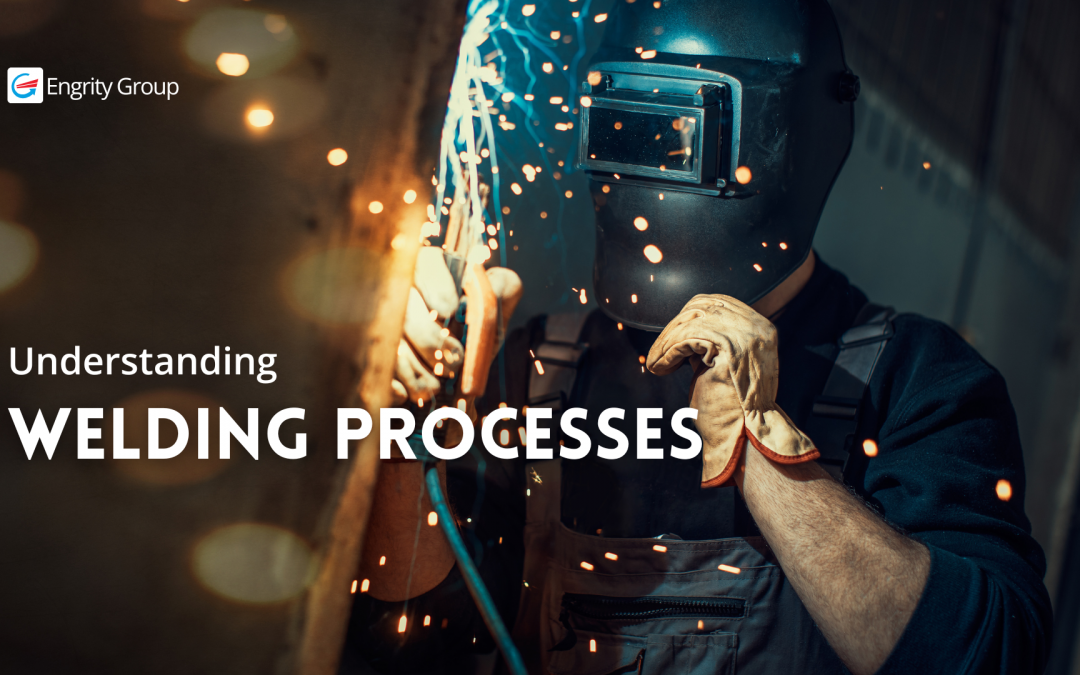Hello Everyone!
Welding is more than a skill — it’s the foundation of modern infrastructure, manufacturing, and energy industries.
Whether you’re fabricating stainless pipelines, structural steel, or precision components, the welding process you choose determines the final outcome — in quality, strength, and durability.
In this guide, we’ll break down the most common welding processes used across industries and explain where each one truly shines.
1. MIG Welding (Gas Metal Arc Welding) — The Productivity Champion
Best for: Carbon steel, stainless steel, aluminum
Industries: Manufacturing, structural steel, automotive, pipelines
MIG welding — or Gas Metal Arc Welding (GMAW) — is one of the most widely used and versatile welding processes.
It uses a continuously fed wire electrode and shielding gas to produce clean, efficient welds with minimal slag.
Because it offers speed, ease of use, and consistent results, MIG welding is perfect for high-production environments.
It’s ideal for fabricating structural steel frames, heavy machinery, and components that require uniform welds over long runs.
Advantages:
-
High deposition rate and speed
-
Minimal cleanup required
-
Suitable for automated or robotic welding
Limitations:
-
Requires clean material surfaces
-
Not ideal for windy or outdoor conditions
2. TIG Welding (Gas Tungsten Arc Welding) — The Precision Process
Best for: Stainless steel, aluminum, copper, titanium, and thin metals
Industries: Aerospace, food-grade piping, petrochemical, ornamental fabrication
When precision and aesthetics matter, TIG Welding is the process of choice.
Using a non-consumable tungsten electrode, TIG produces exceptionally clean, controlled welds with high-quality finishes.
It’s the method used where strength, corrosion resistance, and weld appearance are critical — from sanitary stainless steel piping to aerospace components.
Advantages:
-
Superior control and appearance
-
Works well with thin or non-ferrous metals
-
Produces high-quality, precise welds
Limitations:
-
Slower process compared to MIG or Stick
-
Requires high operator skill
3. Stick Welding (Shielded Metal Arc Welding) — The Reliable Classic
Best for: Carbon steel, cast iron, and thick materials
Industries: Construction, shipbuilding, repair and maintenance
Stick Welding, also known as Shielded Metal Arc Welding (SMAW), remains a cornerstone of field welding.
It’s rugged, portable, and works well even in harsh outdoor environments — wind, rain, or dirt.
The process uses a consumable electrode coated in flux, which produces its own shielding gas as it burns, protecting the weld from contamination.
Advantages:
-
Works in all weather conditions
-
Excellent for repair and heavy-duty applications
-
Portable and simple setup
Limitations:
-
Slower and requires frequent electrode changes
-
More spatter and cleanup than MIG/TIG
4. Flux-Cored Arc Welding (FCAW) — The Heavy-Duty Performer
Best for: Thick steel, heavy fabrication, structural applications
Industries: Construction, shipyards, heavy equipment manufacturing
Flux-Cored Arc Welding is often considered a hybrid between Stick and MIG.
It uses a tubular wire filled with flux that provides its own shielding, making it more tolerant of outdoor conditions.
Flux-Cored is perfect for high-deposition, high-strength welds in demanding applications like structural beams, bridges, and heavy fabrication.
Advantages:
-
Excellent for thick materials
-
High deposition rates and deep penetration
-
Works in less-than-ideal environments
Limitations:
-
More spatter than MIG
-
Requires fume extraction and post-cleaning
5. Submerged Arc Welding (SAW) — The Industrial Powerhouse
Best for: Carbon steel, low alloy steels, pressure vessels, and large structures
Industries: Oil & gas, shipbuilding, manufacturing, heavy equipment
Submerged Arc Welding is an automated or semi-automated process used for thick materials and long, straight welds.
The arc and molten pool are “submerged” beneath a layer of granular flux, which eliminates spatter and enhances weld quality.
This process achieves deep penetration and high efficiency, making it ideal for large-diameter piping, pressure vessels, and structural fabrication.
Advantages:
-
High deposition rates and deep welds
-
Excellent for automation and long seams
-
Produces clean, defect-free welds
Limitations:
-
Limited to flat or horizontal positions
-
Requires specialized equipment
Choosing the Right Welding Process
Selecting the right welding method depends on several key factors:
-
Material type & thickness — Aluminum, carbon steel, stainless, or alloys
-
Project environment — Indoor shop vs. outdoor site conditions
-
Required precision — Aesthetic vs. functional welds
-
Production goals — Speed, consistency, or flexibility
For instance:
-
Use MIG for fast, consistent fabrication.
-
Choose TIG for fine detail or critical stainless/aluminum work.
-
Go with Stick for repairs or outdoor construction.
-
Opt for Flux-Cored in heavy fabrication and structural work.
-
Apply Submerged Arc for automated, heavy-duty welding projects.
Building Quality that Lasts
At Engrity, we believe welding is more than just a trade — it’s a craft rooted in knowledge, precision, and safety.
Each process has its own strengths, and understanding them ensures your projects stand strong under pressure, time, and environment.
From quality inspection to fabrication support, Engrity works alongside professionals who take pride in doing it right — every single time.
Key Takeaways
-
MIG = Fast and efficient for production
-
TIG = Precision and appearance
-
Stick = Reliable and rugged for the field
-
Flux-Cored = Heavy-duty fabrication
-
Submerged Arc = Industrial automation and strength
Contact us today: https://engrity.com/contact/
📧 Email: info@engrity.com
📞 Phone: (780) 800-6297
Experience the Difference
Contact
Phone
+1 (780) 800-6297
info@engrity.com
Address:
201-9403 63 Ave NW, Edmonton, AB T6E 0G2

